Malaysia’s not the only one China ‘intruded’ into recently. Here’s a list.

- 1.1KShares
- Facebook1.0K
- Twitter9
- LinkedIn6
- Email13
- WhatsApp30
Setting boundaries is one of the keys to a healthy relationship, but recently China appears to be testing ours. Literally. On June 1st, it was reported that 16 military airplanes belonging to China’s People’s Liberation Army (PLA) came very close to Malaysia, although the number had been disputed.
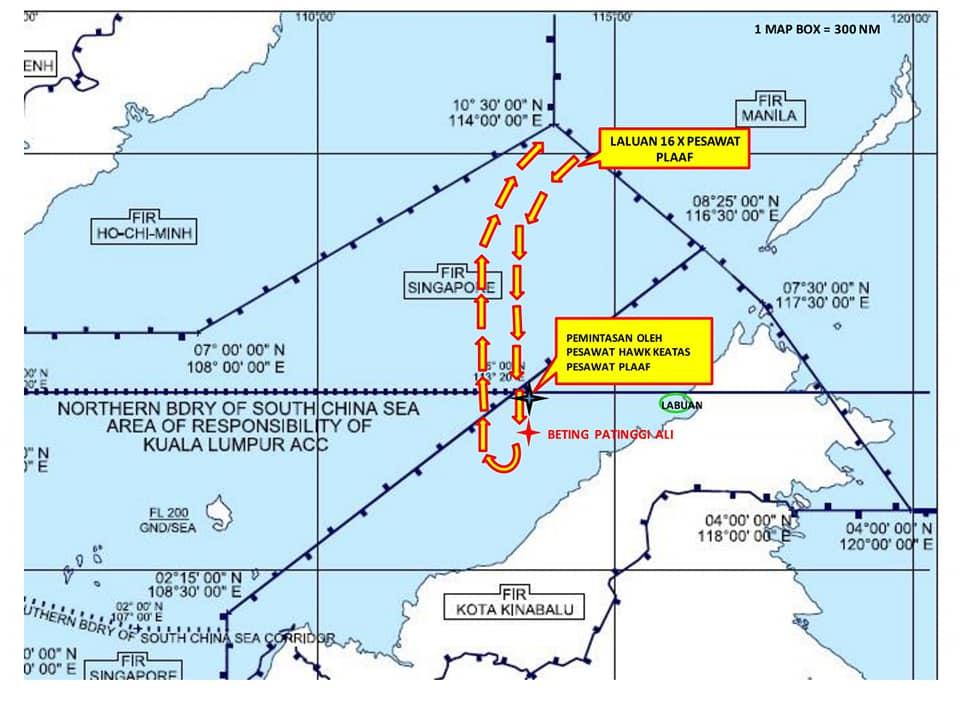
While it seems like they intruded Malaysian airspace, they technically didn’t. To intrude, the planes would have to enter our national airspace, which extends to 12 nautical miles (about 22 km) from the beach. Beyond that it’s international airspace, as per international law. Here’s a handy diagram that explains the difference, plus several other terms that will be important later:
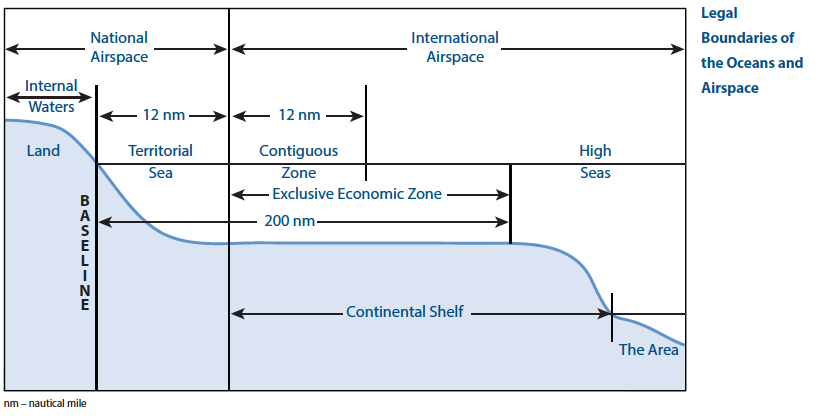
What they entered instead was the Flight Information Region (FIR) of Kota Kinabalu. In simple terms, FIRs are areas assigned to countries where they have to give planes flying through it information (like weather and available airports) and an alerting service (like if you crash or go missing), and while you’re responsible for the traffic within it, you don’t necessarily own all the area inside it. As can be seen in the map above, Singapore has a pretty big FIR despite being so smol.
But even if China technically didn’t intrude into Malaysian airspace, getting within 60 nautical miles (100 km) of Sarawak’s beach is cutting it pretty close. Especially if you’re flying military aircraft, there’s 16 of you, you’re all flying in tactical formation, and none of you responded when asked to contact the controllers at Kota Kinabalu. The Royal Malaysian Air Force (RMAF) reportedly had to send out their own jets to confirm what kind of aircraft they’re dealing with.
“As a result of the air interception carried out, the RMAF has identified the aircraft as Ilyushin Il-76 and Xian Y-20 aircraft. These types of aircraft are strategic transport aircraft and capable of performing various missions. This incident is a serious matter that threatens national sovereignty and aviation safety, based on the density of air traffic in the airline routes in Kota Kinabalu FIR.” – statement by RMAF, as reported by Channel News Asia.
Wah, damn gangster weh. And that’s not the end of it, either. A few days later, a China Coast Guard ship was detected near Beting Patinggi Ali inside Malaysia’s Exclusive Economic Zone (EEZ), 84 nautical miles off the coast of Miri, roughly where the planes had been. While Chinese ships trespassing in Malaysian waters isn’t a new thing – 89 cases between 2016 and 2019 – the events had been very sus.
So why are they doing this? In looking for the answer for that, we realized that Malaysia’s not the only country who got ziarah-ed by China: over the past few years, the Chinese military had gotten pretty close to several other countries, but didn’t quite enter them.
Today, we’ll be looking at some of those cases and see whether we can relate or not, starting with…
1. Chinese ‘fishing boats’ swarming around a reef claimed by the Philippines
What happened: In March this year, the Philippines coast guard claimed that about 220 Chinese vessels had been seen at Whitsun Reef – part of the disputed Spratly Islands, and an area under the Philippines’ EEZ. While these vessels appeared to be fishing vessels, it is believed that they were manned by China’s alleged maritime militia, which are essentially military people being passed off as fishermen.

Through this arrangement, it is believed that China can use these ‘fishermen’ to harass its neighbors in contested areas, while at the same time deny its involvement if things get too hairy. The presence of these ships sparked concerns in the Philippines and Vietnam – both countries that have claimed the reef – that it’s a prelude to China taking over the area.
How they responded: The Philippine Defense Minister had called for China to stop the incursion and call the boats back, as well as filing a diplomatic protest over the matter. However, China ignored the call for them to leave. The Philippines had then increased its military presence in the region through air and sea patrols, but it seems that the Chinese boats were still in the area as of May.
The Philippines’ President Rodrigo Duterte had been criticized for his lukewarm stance on the matter, saying that a confrontation would be pointless. While he had stressed that they won’t withdraw from the area, he seems to be quite careful in maintaining good relations with China.
“I’ll tell China, we do not want trouble, we do not want war. But if you tell us to leave – no. There are things which are not really subject to a compromise, such as us pulling back. It’s difficult. I hope they understand, but I have the interest of my country also to protect.” – Duterte, as reported by Al Jazeera in April.
Why China liddat aiyo: Following calls for them to leave, China had insisted that the vessels were just sheltering from rough seas, and they have denied claims that the fleet was part of their maritime militia, which they say never existed. China had also insisted that they own the reef, which they call Niue Jiao, so it’s perfectly normal for their fishing boats to be there.

If there was another motive behind the incident, it’s unclear: some governments saw it as a geopolitical gambit of some kind, but they don’t know what exactly.
2. Chinese military aircraft not QUITE entering South Korea and Japan
What happened: On 29 December 2018, a PLA aircraft entered both South Korea and Japan‘s Air Defense Identification Zone (ADIZ).
Unlike FIRs, which are regulated by the International Civil Aviation Organization (ICAO), ADIZs are areas established by some countries on their own for national security purposes. About 20 countries/territories have set up their own ADIZ so far, and in case you’re wondering, Malaysia didn’t have one. While there’s no specific law against it, flying a military aircraft into another country’s ADIZ is generally considered an act of aggression.
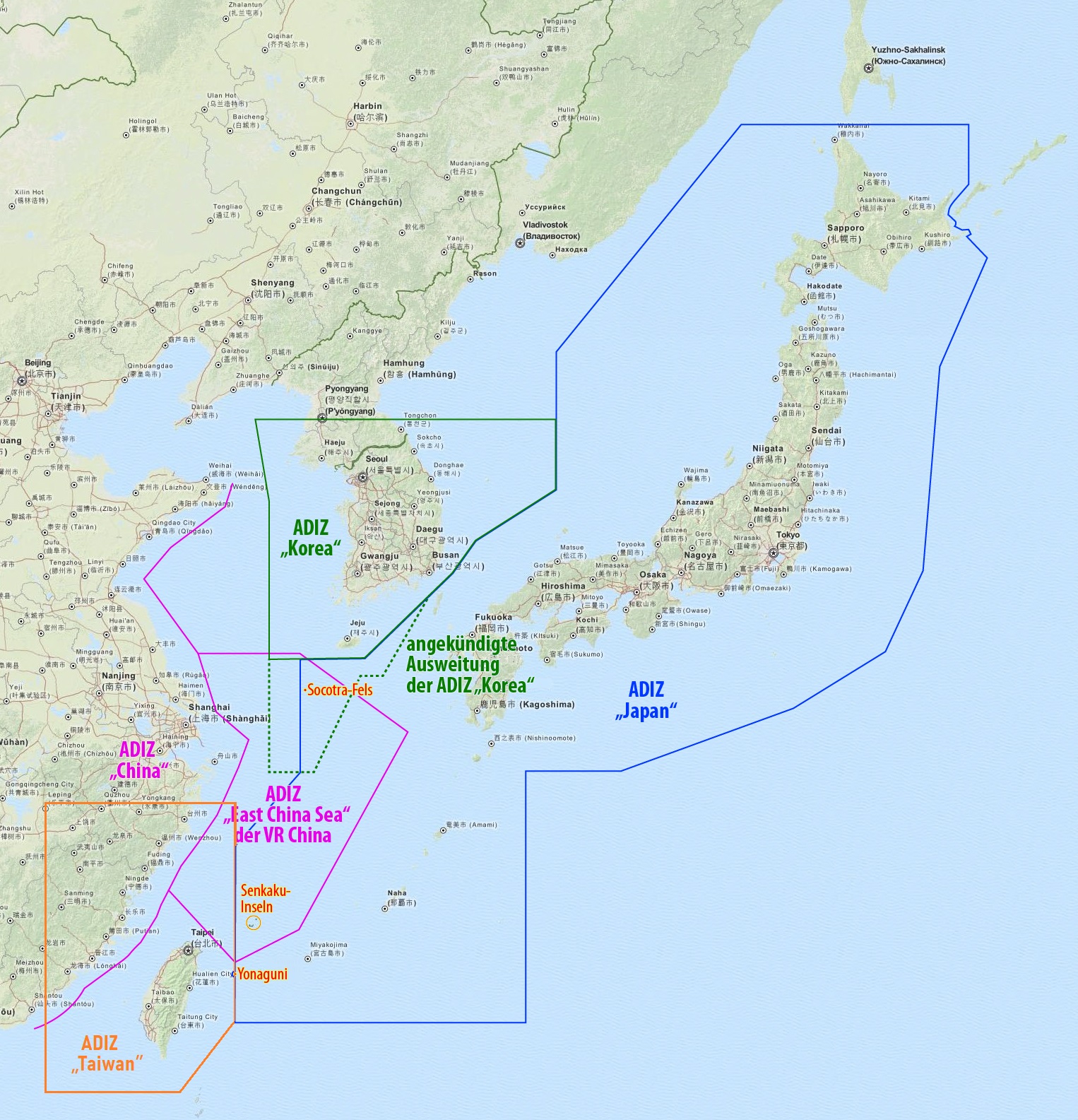
Getting back to the incident, the PLA aircraft – believed to be for reconnaissance – entered South Korea’s ADIZ three times within the same day without providing any notice of its intent. And it’s not a one-day thing, either. Chinese military aircraft had been spotted in the same area 8 times during that year alone, and according to the South Korean Air Force, the number of PLA aircraft entering its ADIZ had increased in recent years: 60 incursions in 2016, 70 in 2017, and 110 in 2018, up to September. They’ve also reported incursions by both Chinese and Russian military aircraft since then.
How they responded: In response to the incursion, South Korea deployed their own fighter jets to track the plane, and issued a warning message to it. Later, their Defense Ministry also summoned the military attache from the Chinese embassy, but China later downplayed the incident, saying that Chinese forces were “in line with the international law and practice”, and South Korea “didn’t have to be too surprised about it”.

Why China liddat aiyo: Apparently, South Korea and Japan had been pretty chummy with the US, and China wasn’t too happy about it. In 2016, South Korea deployed a US-backed anti-missile system some 200 km south of Seoul, whose powerful radar can probe Chinese territory as far as central and northwest China. Japan had also hosted two US-built Aegis Ashore land-based missile interceptor systems prior.
These developments were seen as a threat to China, and according to a retired PLA colonel, the recon flights were likely done to give China a better understanding of military activity in the region.
3. Chinese military submarines lurking near a bunch of Japanese Islands
What happened: Back in January 2018, it was reported that a submarine was detected in the contiguous zone around three uninhabited islands in Japan, collectively called the Senkaku Islands. The submarine was later identified as a Shang-class nuclear attack submarine belonging to the PLA, which can potentially be armed with torpedoes and anti-ship missiles.

Chinese Coast guard vessels and civilian fishing trawlers have regularly entered both the territorial sea and contiguous zone around the islands since 2012, and while rare, PLA frigates have done that as well. However, this incident caused alarm in particular, since it was the first time a PLA submarine had came so close. The only other time a PLA submarine was reported near the Senkaku Islands seems to be later in June 2020, although it’s possible that there were more incidents: to keep their submarine detection abilities secret, Japan may not always announce these incidents.
How they responded: After the incident, Japan’s Defense Minister had expressed their serious concern over acts that ‘unilaterally raise tensions’, saying that operating a submerged submarine close to another country’s territory goes against the norms of international rules. The Chinese ambassador was summoned to Japan’s Foreign Ministry, and an official complaint was given. This complaint was later dismissed by the Chinese Foreign Ministry.

Why China liddat aiyo: The Senkaku Islands are actually being claimed by three countries: Japan, China (who calls them Diaoyu Islands), and Taiwan (who calls them Tiaoyutai Islands). So that kind of explains why the Chinese Foreign Ministry dismissed the complaint by Japan: they see the islands as part of their territory. As for the Chinese Coast Guard vessels going near the islands, they have been seen as China testing their territorial claim over the area.
4. Chinese warplanes harassing Taiwan… hundreds of times
What happened: Of all the countries seeing visits from China’s PLA, Taiwan probably had it the worst. Last year alone, it was reported their ADIZ saw 380 incursions by China’s warplanes, and in the 102 days from Jan 1 to Apr 12 this year, incursions happened on 86 of the days. March 26 saw 20 PLA warplanes surrounding Taiwan in a large-scale military exercise, and on April 12, 25 warplanes visited Taiwan’s airspace, marking the largest incursion so far.
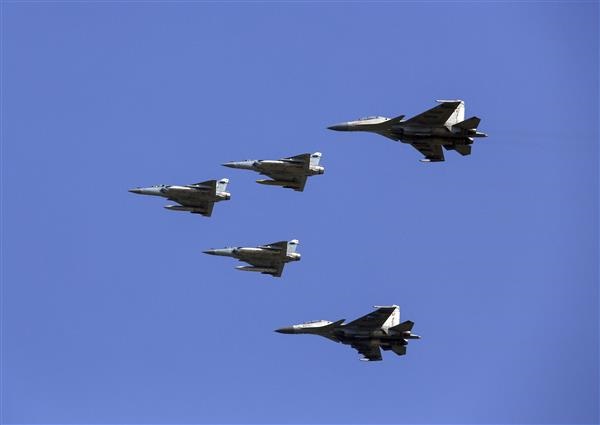
How they responded: For the incursion on April 12, Taiwan reportedly sent its air patrol force to shadow the warplanes, issued radio warnings, and deployed missiles to monitor their movements. We didn’t check if they did the same thing for the other 400+ times, but whatever they did, it didn’t manage to stop China so far.
Why China liddat aiyo: Taiwan and China’s relations are quite strained, but essentially China saw Taiwan as a breakaway province that must eventually be reunited with the mainland. Recently though, Taiwan had been building a relationship with the US; and China, whose relationship with the US hadn’t been that fresh, did not like that.
The incursions on Taiwan then were seen by analysts to be a show of power against Taiwan-US ties, geared more towards warning the US than actually threatening Taiwan. In fact, it was noted that incursions frequently happened soon after Taiwan held diplomatic exchanges: the incursion on Mar 26 happened after Taiwan and the US signed their first agreement under Biden’s administration, while the Apr 12 incursion came after the US warned China against invading Taiwan.
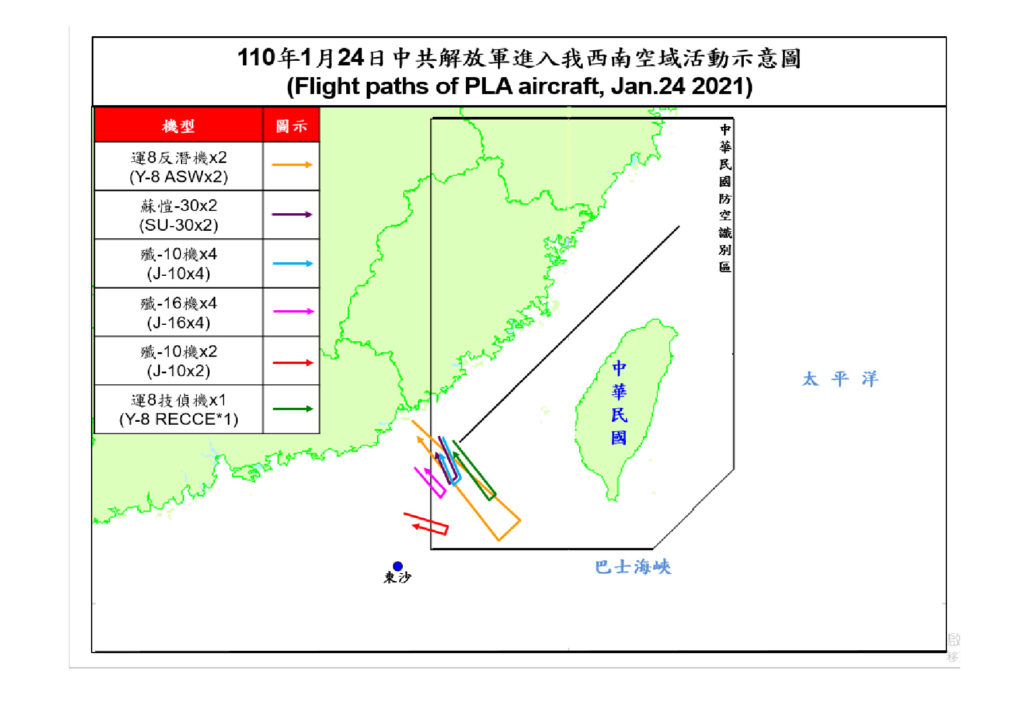
Anyways, after discussing all these incidents, one might wonder…
Why China won’t give us our space?

After the incident, Malaysia had said that it would summon China’s envoy to explain, and that it would issue a note of diplomatic protest. However, China had rejected Malaysia’s complaints, saying that their warplanes were just doing routine training in accordance with international law.
“During the training period, the Chinese air force strictly abided by international law and did not enter the airspace of other countries,” – Wang Wenbin, Chinese Foreign Ministry spokesman, as reported by SCMP.
We’re guessing that’s all the official statement we’re going to get on the matter, but looking at our case and comparing them with the cases we’ve mentioned above, there seem to be some familiar parts. In the analysis and commentary of the events in other countries, there appears to be three common themes:
- China being more aggressive in disputed areas they claim, and
- China flexing its military might to the world and the US in particular, due to their soured relationship and the latter’s growing influence in the region.
- China maintaining that they’re not intruding, either by skirting around the sides or claiming that the place is theirs.
All of these themes can be applied to Malaysia. Malaysia, like Indonesia and other countries that claim areas in the South China Sea, have disputed territories with China, and our defense forces had been associating with the US recently: the RMAF joined the US Navy in a bilateral exercise back in April. These first two themes may have been behind the recent incursion, as observed by Oh Ei Sun, senior fellow with the Singapore Institute of International Affairs.
“This is the Chinese simultaneously signaling their unhappiness to Malaysia and also flexing muscle to the U.S…. China’s end goal in the South China Sea is to control the water and the skies, so every day they advance a little.” – Oh Ei Sun, to VOA News.
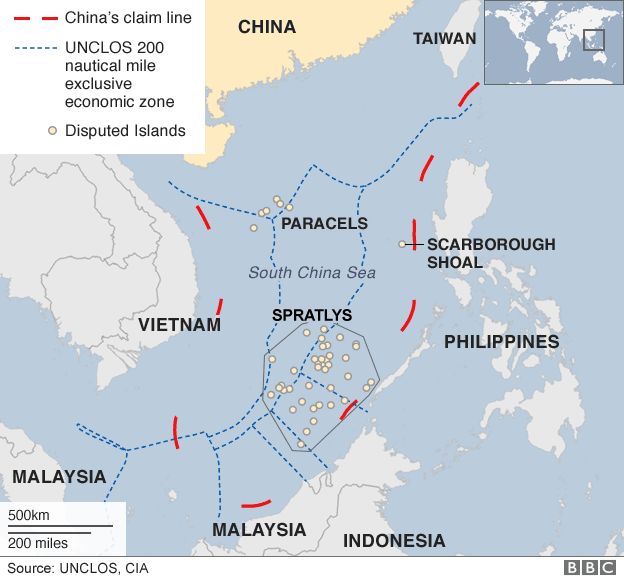
Despite all that had happened so far, observers have noted that escalation doesn’t seem likely. Besides being an important source of vaccines, China is also Malaysia’s biggest trade partner, so there’s a host of incentives for Malaysia to maintain a cordial relationship. Based on our past diplomatic gaffes and current capabilities, it would seem that Malaysia don’t have much wiggle room in our relations with China anyways, but ignoring it just to maintain a cordial relationship may not be the best, either.
Perhaps it would be best if the government were to heed the opposition’s call and come up with a clear plan to address the issue, before it’s too late. A place to start may be moving towards clearer rules about foreign military flights in international airspace, as the current rules are vague and can be exploited by certain quarters, like what happened recently.
“Obviously, the rules for overflight in international airspace of military aircraft are loose, confused and confusing. They need to be sorted out and agreed on, before further international incidents roil the already troubled South China Sea.” – Mark J. Valencia, adjunct senior scholar at the National Institute for South China Sea Studies, to SCMP.
Like any good relationship, boundaries have to be set, otherwise it’ll turn into an abusive relationship. Let’s hope Malaysia didn’t get into one.
- 1.1KShares
- Facebook1.0K
- Twitter9
- LinkedIn6
- Email13
- WhatsApp30
